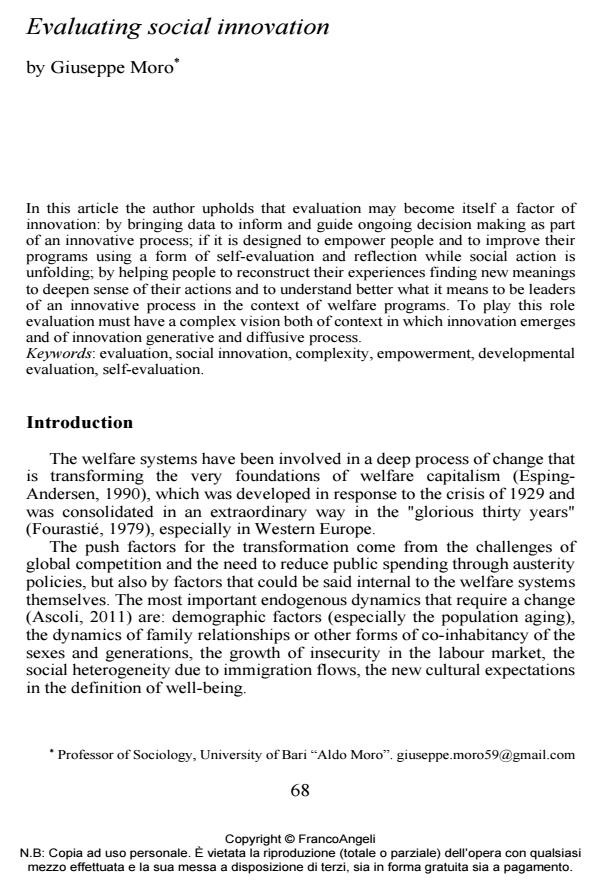Evaluating social innovation
Titolo Rivista SALUTE E SOCIETÀ
Autori/Curatori Giuseppe Moro
Anno di pubblicazione 2015 Fascicolo 2015/1EN
Lingua Inglese Numero pagine 11 P. 68-78 Dimensione file 57 KB
DOI 10.3280/SES2015-001006EN
Il DOI è il codice a barre della proprietà intellettuale: per saperne di più
clicca qui
Qui sotto puoi vedere in anteprima la prima pagina di questo articolo.
Se questo articolo ti interessa, lo puoi acquistare (e scaricare in formato pdf) seguendo le facili indicazioni per acquistare il download credit. Acquista Download Credits per scaricare questo Articolo in formato PDF

FrancoAngeli è membro della Publishers International Linking Association, Inc (PILA)associazione indipendente e non profit per facilitare (attraverso i servizi tecnologici implementati da CrossRef.org) l’accesso degli studiosi ai contenuti digitali nelle pubblicazioni professionali e scientifiche
In this article the author upholds that evaluation may become itself a factor of innovation: by bringing data to inform and guide ongoing decision making as part of an innovative process; if it is designed to empower people and to improve their programs using a form of self-evaluation and reflection while social action is unfolding; by helping people to reconstruct their experiences finding new meanings to deepen sense of their actions and to understand better what it means to be leaders of an innovative process in the context of welfare programs. To play this role evaluation must have a complex vision both of context in which innovation emerges and of innovation generative and diffusive process.
Parole chiave:Evaluation, social innovation, complexity, empowerment, developmental evaluation, self-evaluation.
- Social Innovation and Entrepreneurship in the Fourth Sector Ana Filipa Silva, Luisa Carvalho, María Isabel Sánchez-Hernández, pp.255 (ISBN:978-3-030-75713-7)
Giuseppe Moro, Evaluating social innovation in "SALUTE E SOCIETÀ" 1EN/2015, pp 68-78, DOI: 10.3280/SES2015-001006EN